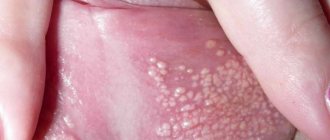Xeroderma pigmentosum is one of the hereditary dermatological diseases. It is extremely rare: 2 cases per 1 million births. Symptoms of the disease appear in early childhood and steadily progress without comprehensive treatment. The danger of xeroderma pigmentosum lies in its high oncogenic potential. Skin manifestations of the disease are an obligate precancer, that is, they are prone to malignant degeneration and in almost all cases turn into cancer.
At the same time, the first dermatological symptoms of xeroderma pigmentosum in a child are most often regarded by parents as a phenomenon of some kind of allergic dermatitis and do not cause unnecessary concern. Lack of alertness leads to late seeking medical help and delayed treatment.
- Causes and mechanism of development
- Kinds
- Clinical picture
- Complications
- Diagnostics
- Treatment methods
- Forecast
Causes and mechanism of development
Xeroderma pigmentosum belongs to a group of hereditary diseases and is transmitted in an autosomal recessive manner. Autosomal recessive inheritance is understood when mutations occur in any chromosomes except sex chromosomes, and for the disease to manifest in a child, it is necessary that both spouses have a defective gene.
The main links in the pathogenesis of xeroderma pigmentosum are increased sensitivity to direct sunlight and the body’s inability to eliminate DNA damage caused by ultraviolet radiation. Disruption of DNA repair processes is associated with the absence or low activity in the skin of enzymes responsible for repair: nucleosides and proteases.
Irreversible damage to the genetic apparatus of cells leads to a number of pathological processes. Thus, at the early stage of the disease in the skin the following is observed:
- increasing the rate of division of the stratum corneum of the skin and exfoliation of dead scales;
- thinning of the spinous (intermediate) layer;
- excessive deposition of melanin in the basal (germinal) layer of the epidermis and in the papillary layer of the dermis;
- infiltration of leukocytes and other inflammatory cells in the perivascular spaces.
At later stages of xeroderma pigmentosum, areas of excessive keratinization (hyperkeratosis), acanthosis (hyperproliferative foci, often pigmented) with elements of cellular atypia, and degenerative changes in collagen and elastin fibers are found on the skin.
The terminal stages of the disease are predominantly characterized by atrophy (thinning) and ulceration of skin areas; warty or papillomatous growths are less common. These processes are especially pronounced on open parts of the body.
What is xeroderma pigmentosum: etiology of the disease
Lenticular melanosis is a genetic autosomal recessive DNA repair disease that causes extreme sensitivity of the skin epidermis to UV rays. The disease is very rare, in Europe and America it occurs on average one patient per million, in Japan and Asian countries more often - per hundred thousand. Most patients are in Brazil.
Most often, xeroderma is diagnosed in children born from consanguineous relationships. Lentigo maligna is found in isolates of relatively small populations of people (up to 1000 people) with a low level of marriage immigration for subjective reasons or religious beliefs. Demes and isolates are characterized by relatively low natural population growth, but with a large number of genetic diseases.
The mechanism of development of the disease is a genetic failure of DNA synthesis, resulting in its destruction by short ultraviolet rays. In principle, the patient’s body does not produce enzymes that neutralize radiation.
Gradually, the genome is completely destroyed, which leads to oncogenic mutations. It is no coincidence that pigmented atrophoderma is called a precancerous condition of the skin, and every year the concentration of oncogene genes and tumor suppressors only increases.
Kinds
Depending on the damaged chromosome, there are 8 subtypes of the disease: A, B, C, D, E, FG and Young's pigmented xerodermoid. The first 7 types of xeroderma pigmentosum have a similar clinical course and are determined only after molecular genetic analysis. Young's xerodermoid pigmentosa has a more favorable prognosis - the symptoms of the disease appear later, and the pathological process itself is mild.
An independent clinical form of the disease is De Sanctis-Cacchione syndrome. It is considered the most aggressive type of xeroderma pigmentosum and is characterized by pronounced changes in the central nervous system. The syndrome can develop with any chromosomal variant of the disease, but most often occurs with subtype A.
Clinical picture
Newborn children have no symptoms of the disease. The first signs of xeroderma pigmentosum begin to be noticed between the ages of 3 months and 4 years. In rare cases, the onset of the disease is possible in adulthood. The literature contains data on the appearance of symptoms in patients aged 25-30 years.
Xeroderma pigmentosum is characterized by seasonality and stages of progression. An exacerbation of the disease occurs in the sunny season (spring - early autumn). The first stage is called inflammatory and is manifested by a specific triad of symptoms:
- photosensitivity - intolerance to direct sunlight;
- erythema - redness of the skin of exposed areas of the body after exposure to the sun;
- foci of hyperpigmentation - the appearance of areas of excess color.
Erythema of the skin is persistent. It is often accompanied by severe swelling, peeling and the formation of small bubbles with transparent contents. After the inflammatory processes subside, at the site of the erythema, foci of hyperpigmentation appear in the form of light or dark brown spots of different sizes. In most cases, they resemble a scattering of freckles, but can be large (lentigines).
The second stage is poikilodermic. It begins at the age of 3-7 years and is characterized by pronounced changes in the skin in the form of telangiectasia (spider veins), areas of hyperkeratosis with abundant peeling, areas of atrophy and thinning of the skin. A typical manifestation of the second stage is also the formation of small, smooth, whitish scars with a shiny surface. Upon careful examination, areas of skin atrophy have an uneven, rough appearance and resemble a burn surface.
Pronounced changes in the skin lead to a number of serious consequences:
- deformation of the external nose and nasal passages, resulting in difficulty breathing;
- curvature of the mouth;
- deformation of the ears due to cartilage atrophy;
- eyelash loss;
- eversion or inversion of the eyelids.
In patients with xeroderma pigmentosum, areas of hyperpigmentation persist, and as the disease progresses, hypopigmented spots appear. As a rule, they are localized on the back and wings of the nose, on the chin.
In 75-80% of patients at the second stage, signs of damage to the organ of vision are also determined: lacrimation and photophobia, blepharitis, ulceration of the conjunctiva and its inflammation, clouding of the cornea and the appearance of spots on it. In 20% of patients, symptoms of dysfunction of the central nervous system are detected in the form of decreased sensitivity, mental retardation, changes in coordinated muscle function (ataxia) and decreased or absent unconditioned reflexes (for example, tendon reflexes).
The disease enters the third (tumor-like) stage in adolescence. It is characterized by the appearance of benign or malignant neoplasms of various shapes and sizes on the affected areas. Benign tumors can be represented by papillomas, nevi, fibromas, angiomas and have a high risk of oncological transformation. Often, neoplasms are also detected on the mucous membrane of the mouth and nose.
De Sanctis-Cacchione syndrome has a severe clinical course. Its main symptoms are impaired mental development (idiocy) due to a decrease in the size of the brain and skull, dwarfism and typical skin manifestations of xeroderma pigmentosum. Additional signs of the syndrome are delayed sexual development and severe disturbances of the nervous system (paresis, paralysis, ataxia). Skin manifestations appear early in patients with De Sanctis-Cacchione syndrome. They are pronounced, rapidly progress and develop into oncological neoplasms already in childhood.
Introduction
Xeroderma pigmentosum is a rare inherited genetic disorder that causes abnormal and excessive sensitivity to sunlight.
The causes of the disorder are associated with a mutation in a gene that produces a protein necessary for DNA repair. People with xeroderma pigmentosum suffer from skin, eye and, in some cases, nervous system disorders. Since the development of tumors of the skin or other organs is almost inevitable, the quality of life is greatly reduced, as are expectations.
The diagnosis of xeroderma pigmentosum is based on observation of symptoms and signs that are obvious and fairly unambiguous.
Unfortunately, there is still no specific cure for this disease, but treatment is available to control symptoms (symptomatic therapy).
Chromosomes and repair of damaged DNA
Before describing xeroderma pigmentosum, it is useful to make a brief reference to genetics.
Chromosomes and DNA
Each cell of a healthy person has 23 pairs of homologous chromosomes (23 on the maternal side and 23 on the paternal side). A pair of these chromosomes is sex , that is, it determines the sex of the individual; the remaining 22 pairs are composed of autosomal chromosomes . A total of 46 human chromosomes contain all the genetic material, more commonly known as DNA . A person’s DNA contains his somatic characteristics, his predisposition, his physical abilities, etc.
Genes and DNA mutations
DNA is built on chromosomes in many genes . Each individual gene occupies a specific chromosomal position and is represented by two variants, called alleles , shared between a given maternal chromosome and its paternal homologue. Proteins come from genes . When a DNA mutation , a gene on a given chromosome may be defective and therefore produce a defective protein.
Is it possible to restore mutations?
Very often, genetic mutations (that is, genes) that affect DNA are repaired by repair systems . This is the result of the evolution of our body, which, in order to survive and adapt to the environment, has developed various medicines, including this one.
Repair systems are varied and take advantage of the synchrony and interaction of different repair proteins to function properly. They are usually very effective, but it may happen that they make a mistake and do not reverse the mutation.
If you understand where proteins come from, you can also guess what happens after an incorrect (and therefore permanent) gene mutation for protein repair. The repair system in which the latter is involved no longer works properly, its efficiency decreases, and DNA mutations increase due to the impossibility of their repair (restoration).
Complications
The main complication of the disease is the appearance of skin and visceral (internal) malignant tumors. Multiple warty neoplasms have the highest risk of oncogenic transformation. The incidence of malignant tumors also correlates with the severity of skin pathological processes. With the early onset of the disease and its aggressive course, oncological tumors appear in adolescence (12-14 years) and quickly metastasize to internal organs.
Among malignant tumors, squamous or basal cell carcinoma most often develops, and melanoma of the skin or eye is the least common. Cases of more than 50 different types of oncology have been described: fibrosarcomas, angiosarcomas, histiocytes and others.
The disease can also lead to severe deformities of the face (mouth, nose, ears). The result is social maladjustment of the child and psychological problems.
Culture[edit]
Because people with XP need to strictly avoid sunlight but can go outside at night, they are called children of darkness
,
children of the night
and
children of vampires
. These terms may be considered offensive. [32]
XP has been a plot element in several works of fiction. One common theme in XP movies is whether teens with XP are at risk of sun exposure while looking for a romantic partner. [33]
Films such as Children of Darkness
, a German silent drama film that was released in two parts in 1921 and 1922 respectively, was among some of the initially popular films made about XP.
Other films, like the 1964 American drama film Dell
, starring Joan Crawford, Paul Burke, Charles Bickford and Diane Baker, directed by Robert Gist, which was originally produced by Four Stars of Television as a television pilot for a proposed NBC series called
Royal Bay
, which was also based on this skin condition.
"The Dark Side of the Sun"
, a 1988 American-Yugoslav drama film directed by Bozidar Nikolić and starring Brad Pitt in his first-ever role as a young man searching for a cure for his disorder.
"The Others" (2001 film)
, a 2001 American psychological horror film starring Nicole Kidman, features two children, Anne and Nicholas, who must avoid sunlight due to a rare disease characterized by photosensitivity.
CBS television film aired in 1994, Children of Darkness
, was based on the true life story of couple Jim and Kim Harrison, whose two daughters are HR. [34] [35]
In Lurlene McDaniel's young adult book The Way I Love You
tells the story "Night Vision" in which the protagonist, leukemia survivor Brett, falls in love with a girl named Sheila who has XP.
Christopher Snow, the main character of the trilogy
Dean Koontz's
Moon Bay
, has experience, and therefore must live most of his life at night.
The first two entries in the trilogy, Fear Nothing
and
Seize the Night
, were published in 1998.
The final entry in the trilogy, tentatively titled Ride the Storm
, has not yet been published as of August 2022. [36] [37]
2011 French drama film Moonchild
is based on a 13 year old child with XP which prevents him from being exposed to daylight.
2012 documentary Sun Kissed
explores the problem of XP on the Navajo Indian Reservation, and links it to the genetic legacy of the Navajo Long Alley when the Navajo people were forced to move to a new location. [38] [39] [40]
2022 Romantic Movie Midnight Sun
, based on the 2006 Japanese film
A Song to the Sun
, tells the story of a girl named Katie Price who has life-threatening sensitivity to sunlight due to XP, and the impact her illness has on her normal life, which ultimately takes her away life as she is accidentally exposed to sunlight for a moment while watching the sun rise.
Diagnostics
A detailed history taking is of great importance in making the correct diagnosis. The collected data (onset of the disease in early childhood, seasonality of symptoms, high photosensitivity, consanguineous marriages) suggest xeroderma pigmentosum. The diagnosis is confirmed after cytological and histological examination of the affected areas of the skin.
Additional examinations include examination by a dentist, otorhinolaryngologist, ophthalmologist and neurologist to exclude damage to the central nervous system, oral apparatus, visual and hearing organs. For De Sanctis-Cacchione syndrome, an X-ray examination or computed tomography of the skull bones, and magnetic resonance imaging of the brain are also performed. In this case, small sizes of the sella turcica, a decrease in the volume of the cranium and brain, and underdevelopment of the cerebellum and pituitary gland are detected.
Risks of inheriting melanosis
As mentioned earlier, lentigo maligna is an autosomal recessive disease, that is, the vast majority of people have no family history. In Russia, cases of lengioma are extremely rare - 1 patient in one and a half million. The most common cases of diagnosis are in Japan and Brazil.
For parents who had a child diagnosed with atrophoderma pigmentosa, the risk of giving birth in the future with the same pathology is 25%.
Even isolated societies do not always encounter massive signs of the disease, since at least 5 generations of closely related relationships must pass for the genetic load to reach a serious level.
An example from medical practice. The patient is 3 years old, his parents are natives of Japan, they did not have xeroderma. Conservative, preventive and supportive therapy was carried out for 12 years. At the age of 15, the patient died from the rapid development of metastatic melanoma. There are 2 more children in the family, none of whom have been diagnosed with xeroderma pigmentosum. At the same time, the subsequent risk of having a child with the pathology doubles.
Treatment methods
There is no etiopathogenetic treatment for xeroderma pigmentosum. In essence, any methods of therapy are symptomatic and are aimed at eliminating the existing manifestations of the disease. Comprehensive treatment of the disease includes:
- vitamin therapy courses;
- antimalarial drugs - the effectiveness of drugs from this group in eliminating the inflammatory process and sensitization of the body has been noted;
- aromatic retinoids;
- cytostatic antitumor drugs.
Patients are also advised to adjust their lifestyle, limit exposure to the sun as much as possible, and before going outside, take care to protect their skin from sun rays.
All benign skin elements are subject to mandatory removal and histological examination. When a neoplasm transforms into a malignant one, treatment tactics are determined based on the type of tumor and the stage of the oncological process.
Symptoms of the disease
The initial stage of the disease is diagnosed already at the age of 1 year, although some patients encounter the first problems during puberty, when hormonal changes in the body occur.
At the first stage, patients are characterized by:
- light burns even in the absence of direct sunlight;
- increased photosensitivity;
- photophobia;
- lentiginous rash.
- At the next stage the following are noted:
- premature skin aging;
- photokeratosis;
- neoplasms on the face and neck;
- carcinomas;
- melanoma.
The highest concentration of carcinomas occurs in relatively open areas of the body - face, neck, head, shoulders. The main impact falls on vision. In 9 out of 10 cases, photophobia, conjunctivitis and other eye pathologies are noted.
Children experience mental retardation, spasticity, hypo- or areflexia.
Forecast
The quality and length of life depend on several factors, primarily on the timing of seeking medical help, making the correct diagnosis and early initiation of comprehensive treatment. With timely diagnosis of the disease and constant dynamic monitoring by a dermatologist or oncodermatologist, the prognosis is relatively favorable.
With warty growths on the skin, about 35% of patients do not survive to adulthood and die at the age of 13-15 years. This is due to the high tendency to malignancy and rapid metastasis of the tumor to internal organs.
De Sanctis-Cacchione syndrome has a poor prognosis. The aggressive course of the disease leads to death from oncopathology in childhood in 70% of patients.
Book a consultation 24 hours a day
+7+7+78
Xerosis. Diet
To make dry skin feel better, you should include these products in your menu:
- seafood (contains a lot of polyunsaturated fatty acids);
- vegetables and fruits rich in vitamin C (an antioxidant responsible for skin renewal);
- vegetables and fruits of red and green colors (contain beta-carotene, which is converted into vitamin A. This is a serious antioxidant that does not allow cells to be destroyed);
- clean, fresh water (daily intake for women - from 30 ml per kg of weight, for men - from 40 ml per kg of weight per day).
Traditional recipes:
- Glycerin bath. Restores the epidermal cover. Add 0.5 cups of natural glycerin (non-technical) to a bath of warm water. Take 10-15 minutes.
- Honey-oil bath. A liter of milk is heated without boiling. Add 200 g of natural honey (not store-bought, it is better to purchase it from beekeepers). Mix and gradually add 1 tablespoon of almond oil. The mixture is poured into a bath of warm water. Take - 10-15 minutes. Softens the skin.
- Olive mask. Mix 2 tablespoons each of olive oil and honey. Apply to damp skin after shower or bath. Keep for 20 minutes. Rinse off with warm water. Softens and moisturizes the skin.











